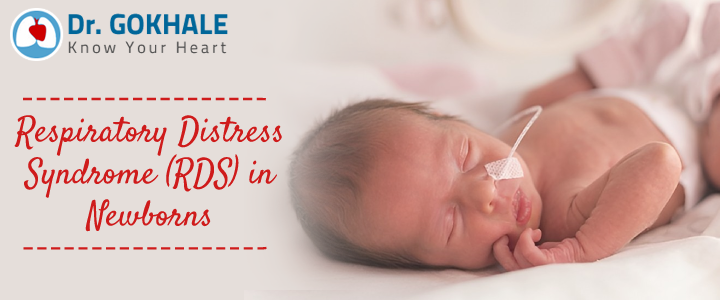The symptoms of RDS usually vary based on the level of prematurity, gestational age of the baby, the incidence of the infection and other factors. Though treatment for RDS exists, in a few cases the treatment can lead to the development of other respiratory conditions too. With the inputs from a leading lung specialist in Hyderabad Padma Shri Awardee Dr Alla Gopal Krishna Gokhale let us know more about Respiratory Distress Syndrome today.
What causes Respiratory Distress Syndrome?
Respiratory Distress Syndrome is caused by the insufficient production of surfactant in the lungs which is formed at about 27 weeks of pregnancy. The tiny air sacs are responsible for the exchange of oxygen and carbon dioxide between the lungs and blood. And this surfactant is a liquid that coats the air sacs to avoid collapse. Without adequate surfactant breathing become a problems due to inadequate exchange of oxygen and carbon dioxide.
A baby usually produces enough surfactant to breathe comfortably by the 34 weeks of pregnancy. So a baby that is born prematurely well before these 34 weeks may not have enough surfactant to breathe comfortably resulting in Respiratory Distress Syndrome.
What are the symptoms of Respiratory Distress Syndrome?
Symptoms of Respiratory Distress syndrome are easily noticeable during birth. The most common ones include:
- Rapid and shallow breathing
- Grunting while breathing
- Bluish tone to the baby’s lips, toes or fingers.
- Inward pulling of muscles at ribs for breathing.
- Flaring of nostrils while breathing
Who is at greater risk of suffering from Respiratory Distress Syndrome?
As said, babies born prematurely (< 27-28 weeks) suffer a higher risk of developing Respiratory Distress Syndrome. In a few cases, even normal babies may also suffer from RDS if the mother has Diabetes or the baby is underweight or has underdeveloped lungs due to any other conditions. Siblings with RDS, multiple births, infections, or incidence of any other health conditions for the baby during the birth are also some of the risk factors associated with RDS, says lungs specialist in Hyderabad Dr Alla Gopala Krishna Gokhale.
What is the treatment for Respiratory Distress Syndrome?
Diagnosis for Respiratory Distress Syndrome is made by the lung specialist after physical examination, imaging studies (X-rays) and blood tests. The treatment for Respiratory Distress Syndrome depends upon the severity of the condition, the kid’s general health and age. Treatment options commonly used by the lung specialist include:
- Delivery of extra oxygen: Nasal Cannula, Continuous Positive Airway Pressure and a Ventilator may be used to deliver extra oxygen to support breathing as a prompt measure.
- Artificial Surfactant: Surfactants may be delivered to the lungs of the baby through the windpipe.
- Medication: Antibiotics may be introduced if the kid if the infections are suspected to play a role in the condition
“Today, steroid injections are also used during the pregnancy to prevent Respiratory Distress Syndrome from happening. But in few cases, if the delivery is quick there may not be enough time to run the full course of steroids and they may not have enough time to start working” says leading lung specialist and lung transplantation surgeon in India Dr Alla Gopala Krishna Gokhale. However, there are the best facilities for lung treatment in India to adequately treat a new born with RDS.
If you are looking for a lung specialist in Hyderabad for Respiratory Distress Syndrome treatment Dr Gokhale will be able to help. You can contact him here: @Call9603040506
 Ask Doctor
Ask Doctor
